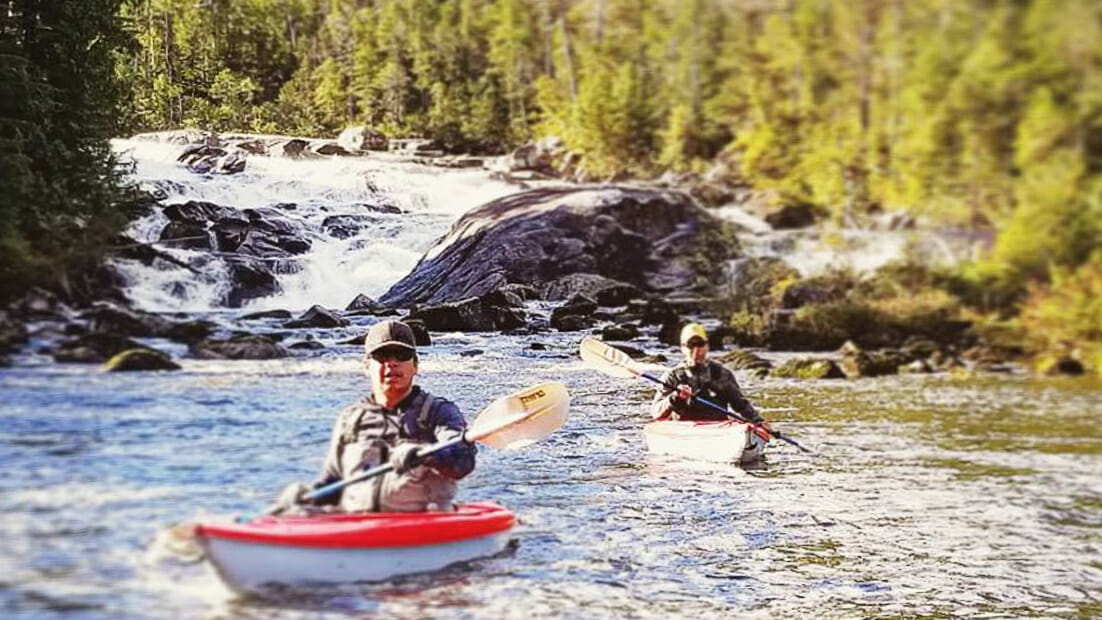Estimated Reading time

3 Mins
First Nations Lead Efforts to Monitor Salmon Populations

First Nations’ stewardship departments are leading efforts to ensure salmon populations are managed with the best available data. A recent Narwhal article highlights one area where First Nations stewardship endeavours are filling in gaps left behind by decreased federal funding.
The article explores how decreased funding for monitoring of spawning habitats by creekwalkers—individuals who walk the spawning habitat of salmon to count the fish one by one—could greatly impact the future of the species.
“These creekwalkers provide essential information about populations,” writes journalist Matt Simmons. That information informs fisheries management decisions, including how many salmon can be caught for commercial or recreational purposes.
From 1949 until today, the number of creekwalkers monitoring salmon habitat on the north coast decreased from 150 to two, according to Simmons’ article. Pacific Wild reports that only 215 of 2,500 spawning streams on the central and north coast are being counted. That’s about a 70 per cent decrease since the 1980s, when around 1,500 of those streams were monitored.
We’ve been here for thousands of years, I think we have a lot of information we can share.
First Nations Stewardship Departments Supply Population Data
But First Nations stewardship departments are stepping up to fill in the information gaps left by the decrease in federal monitoring.
When creekwalker Doug Stewart retired after 40 years, the Kitasoo/Xai’xais First Nation were the only ones counting spawning salmon in around 15 of the 150 streams in his former monitoring area. The Nations receives “a small amount of funding from Fisheries and Oceans Canada and share their data with the department,” writes Simmons.
“We’ve been here for thousands of years, I think we have a lot of information we can share,” says Doug Neasloss, stewardship director for Kitasoo/Xai’xais in a recent video. “We want to Indigenize some of the [federal] policies. There’s ways we can do it better and have been doing it better.”
Kitasoo/Xai’xais fisheries director Larry Greba (and former Coast Funds’ director) said the Nation is trying to cover a handful of streams that are representative of other streams.
“In the absence of that information, you have no idea what’s going on with stocks,” he said in the Narwhal article. “Unfortunately, in some cases they seem to be going — I hate to use the word — extinct. We’ve got a number of systems in the area that have just gone to next to nothing.”

But Greba said he’d like to see Fisheries Minister Bernadette Jordan allocate more resources for Indigenous monitoring programs and said her recent mandate letter from the prime minister, which calls for the development of a Pacific salmon strategy, offers a glimmer of hope.
The article reports on the monitoring work being carried out by both Haíɫzaqv (Heiltsuk) and Gitga’at First Nations:
“Other coastal nations, including the Heiltsuk and Gitga’at, have similarly started monitoring streams in the absence of Fisheries and Oceans Canada programs. Fraser Los, communications coordinator for the Coastal Stewardship Network, told The Narwhal in an email that efforts are underway to standardize the methods of data collection and make sure they’re compatible with Fisheries and Oceans Canada. Los said Coastal First Nations are working on digitizing data collection as part of a regional monitoring system.
Learn more about the stewardship projects and programs led by First Nations along the central and north coast of BC and on Haida Gwaii. Read the Narwhal article in its entirety here.
